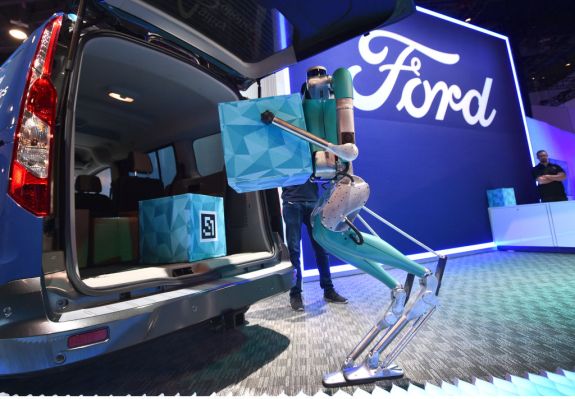“I think there are fewer fake robots this year.” I spoke to a lot of roboticists and robot-adjacent folks at this year’s CES, but that comment from Labrador Systems co-funder/CEO Mike Dooley summed up the situation nicely. The show is slowly, but steadily, starting to take robotics more seriously.
It’s true that words like “fake” and “seriously” are quite subjective; surely all of those classified by one of us as the former would take great issue with the tag. It’s also true that there are still many devices that fit firmly within the realm of novelty and hypothetical, both on the show floor and in press conferences, but after a week at CES — including several behind-the-scenes conversations with investors and startups — the consensus seems to be that the show is slowly embracing the more serious side of robotics.
I believe the reason for this shift is two-fold. First, the world of consumer robotics hasn’t caught on as quickly as many had planned/hoped. Second, enterprise and industrial robotics actually have. Let’s tackle those points in order.
As my colleague Darrell pointed out in a recent piece, consumer robotics were showing signs of life at this year’s event. However, those who predicted a watershed for the industry after the Roomba’s arrival on the scene some 18 years ago have no doubt been largely disappointed with the ensuing decades.
There’s a reason so many examples of promising home robotics still feel like iterations of the original Roomba: The device filled an actual consumer need and performed reliably. Even its originator iRobot has failed to find success straying too far from the mold of the original. CEO and co-founder Colin Angle has a funny line about not finding success as a roboticist “until I became a vacuum salesman.” It’s funny because it’s true.
The last year has been littered with examples of companies that looked to buck this trend — and failed to do so. Jibo and Anki are two prominent examples, both closing up shop recently. Bosch, too, pulled the plug on its Kuri robot in late 2018. It’s understandable that so many companies are attempting to crack the code on this, because a) It seems like a logical next step in the evolution of the connected home and smart assistants and b) Who doesn’t want a freaking robot?
But it’s supremely difficult to do well. There’s a reason Samsung’s keynote was almost entirely conceptual. I spoke to a rep for the company about Ballie, the ball robot (from the brand that brought you Fold, the folding phone) and they wouldn’t clarify how choreographed the demo was. No firm date, no specifics. At present, Ballie and the rest of the products on parade were very much in the realm of the conceptual.
Frankly, I’m torn whether this is a good approach. Particularly in the context of the Consumer Electronics Show, these sorts of products tend to generate an unrealistic expectation. If the home assistant robot does come to market, I would be shocked to see it perform with any sort of precision a fraction of the tasks it has been shown executing on video.
I want to be clear that this isn’t a shot against Samsung. Bixby aside (okay, that was a shot), the company has among the strongest resources to bring a mainstream home robot to market. But the similarly positioned Sony wasn’t exactly able to crack that code with the latest Aibo, in spite of several generations of trying. The robot dog is undeniably impressive in several ways, but it’s far from a mainstream device.
“There are people who love it,” Sony Innovation fund CEO Gen Tsuchikawa said of Aibo at the event. “But after a point, because of a lack of use case, it hits a wall. And that’s what we see for many robot ideas. The Agility robot is different, in that it’s gone over a hurdle that many robots have not.”
Agility’s package-delivering robot Digit was, after all, a big part of the reason Tsuchikawa was at the event in the first place. The Innovation Fund is a key investor in Agility Robotics, the Pacific Northwestern startup best known for its bipedal Cassie robot. While impressive, the device fulfilled no practical purpose beyond research. “It was unapologetically a research robot,” CEO Damion Shelton told TechCrunch.
Digit is an attempt to apply those learnings to something practical — in this case, package delivery. The demo is impressive enough that Ford purchased several robots for testing purposes. The auto giant is exploring using the robot for the final 100 meters of package delivery. Delta made a similar announcement, noting that it will be testing exoskeletons from Utah-based Sarcos for use among employees.
There’s a cynical (and probably at least partially correct) view that these sorts of deals are publicity stunts — big companies using CES to demonstrate how forward-thinking they are about new technologies. But there’s something to be said for the show’s position at the forefront of such technologies. The products are real, even if wider use is hypothetical. And in an era when Amazon has deployed more than 100,000 robots across its U.S. fulfillment centers to enable next and same-day delivery, we’re well into the realm of real-world use.

